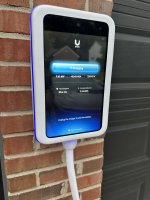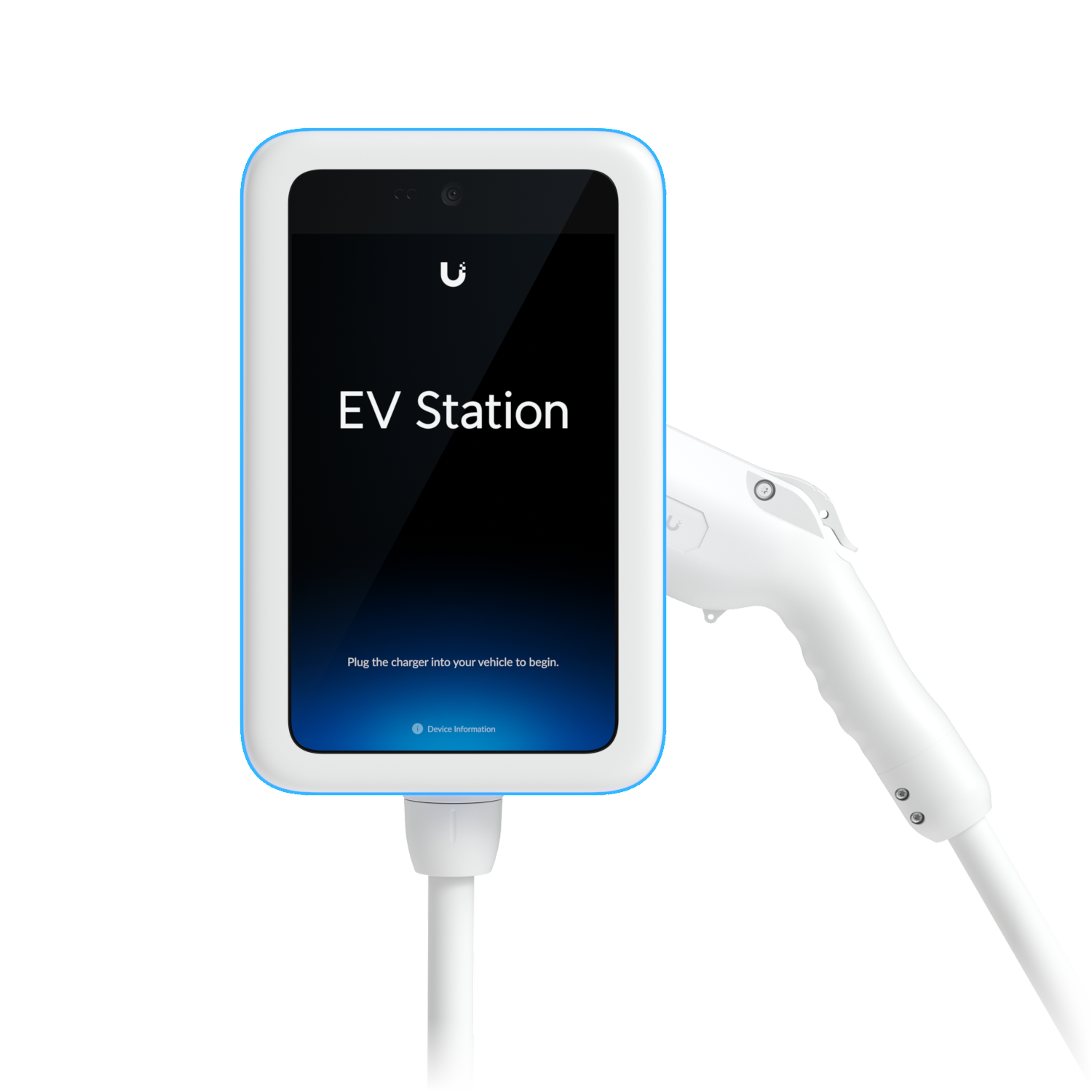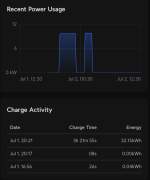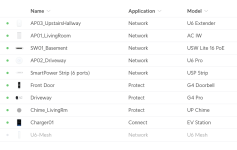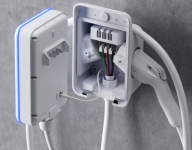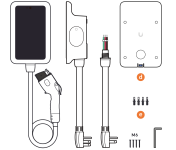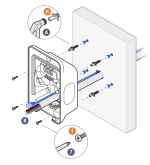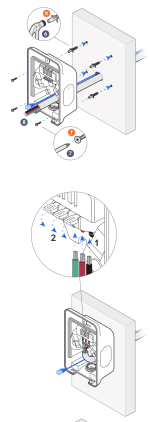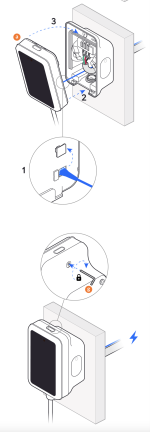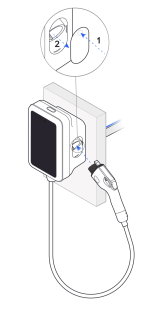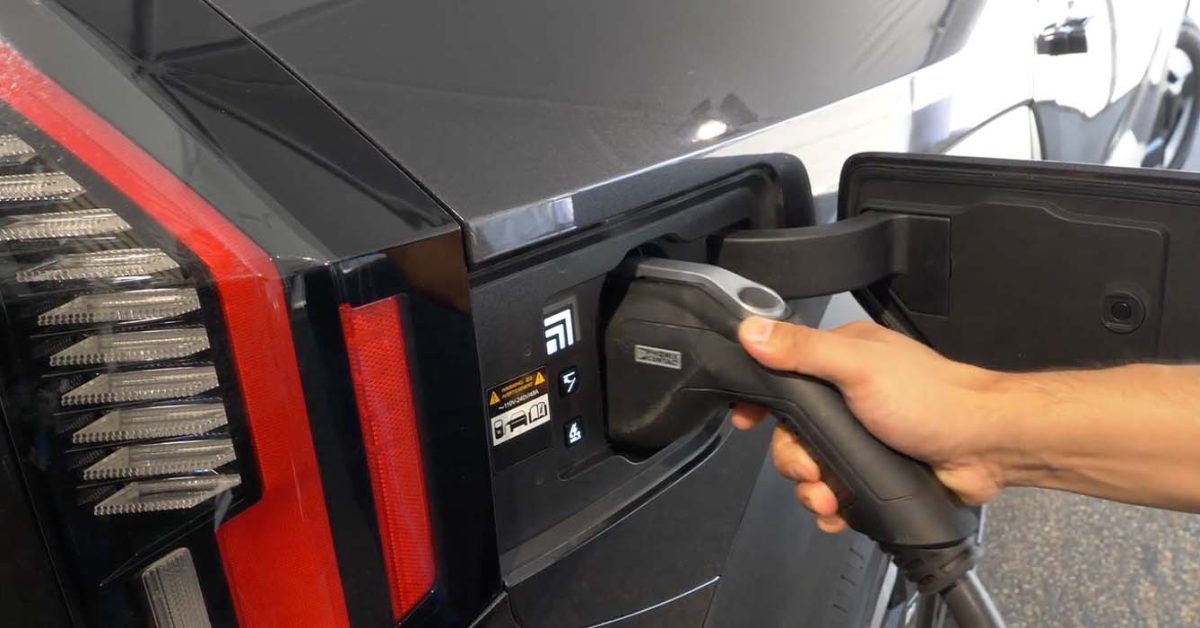kristiandg
Member
Originally posted here: https://www.facebook.com/groups/2998294343813502/permalink/3087674664875469/?mibextid=W9rl1R
All, just a heads up regarding the Lucid home charger. Although the home we are building will have no need for reverse power (letting the car power the house during outages), the place we’re renting, I thought might benefit from such a feature. The charger I really wanted to get, I held off on figuring the Lucid one would be as excellent as the car and, again, that eventual reverse power thing…
I had it installed around Feburary, and in the first couple of weeks, it failed. It still powered on but it couldn’t handshake with the car at all. Lucid believed the unit was defective so they shipped me a replacement. I spent around $500 to have it swapped (at the time, I then also had a 50a dryer plug installed off the same circuit so I would never be screwed again by not having some method to charge, hence the higher-than-normal labor to swap).
A couple weeks ago I discovered the unit was no longer able to connect to WiFi (I have IT-level structured WiFi, so it’s not like a range issue or a crappy router, as the closest access point is 8 linear feet from the charging station). Cycling the charger’s power (breaker) is supposed to broadcast the default WiFi for a short period of time, but it wasn’t. My tests determined the WiFi radio in the unit had died. Contacting Lucid, they again wanted to send me a replacement. However, I was no longer receptive to the pain in the ass of replacing the entire thing, or the excess costs associated with such a swap.
See, Lucid designed the charging station with circuitry in both its shell (where the high voltage connects), as well as its front face. In other words, when you swap it, you usually need to swap both pieces, unless you do further testing and might be able to get away with just swapping the front face (this would be problem-dependent though) - I also don’t know if they’re serialized (expect to see both of their paired parts). In any case, from an engineering perspective, it’s poor design practice to spread your “brains” across two parts, one of which code dictates should be swapped by a specialist…
I told Lucid I would not be swapping any longer and was sending this one back for a full refund. Initially they pushed back (with a somewhat canned response stating that a future update may fix the issue but since it still is able to charge they would be closing the ticket). I responded (quite douchey, actually) pointing out that their units were 0-for-2 in a 6 month timeframe, as well as the absurdity of what they were saying (that a unit no longer able to connect to the internet would be fixed with a future software update….. that it can’t get….. ever)…. I further demanded escalation and a phone call.
Within an hour I did get a call from someone who saw the absurdity of what was said and understood why I wanted to return it at this point. I’m supposed to get a call next week to coordinate that, but they also mentioned something else I hadn’t been told previously: that Lucid will reimburse your electrician charges for a swap if they send a replacement (obviously not for the initial install, which I totally understand, and presumably only while it’s in warranty). As great as that is, I pointed out the need to change the design so that all the circuitry exists solely in the front face, so that replacements don’t require an electrician in the future. I even sent them a link to the unit I installed today, which is built specifically for easy replacement by putting all the “brains” in a snap-on front face, just for their reference (as, a one-time design change is far more economical than electrician reimbursements).
Now, for those interested, this is the unit I got. It’s a few hundred dollars cheaper. It can’t do reverse power, and it can’t do more than about 70-amp feed, but I’d rather it work and be well designed than charge faster (overnight is still overnight). I wish it were black, and I’m sure in a couple years it will be), but the coolest thing about it is, it’s tied into the rest of my network infrastructure, can be locked with user-specific access, and most importantly, has a big ass touchscreen (that you can load videos on if you like, sort of like a screensaver - think holiday decorations). Yes, I like the toys. And this is, by far, the sexiest and most well-designed charger I’ve found.
Some of you may be familiar with Ubiquiti (ex Apple guy started a networking company, with the similar design and deployment “ease” concepts, then added on equally well thought out cameras, door access, and now charging stations - their phone system is terrible though - but all of this runs on a single box in your basement and is centrally controlled - they haven’t merged everything yet, but hopefully they will soon, as it would be nice for this unit’s camera to appear in the camera application as another camera to view). In general, almost everything they make is well-designed, though their software tends to be lacking some blatantly obvious features. For us, one “firewall” unit runs the network, the cameras/doorbell, and now this charging station as a single central controller. Best of all, there are metrics visible to show all the charging activity
If you have questions, feel free to hit me up. But, in general, the purpose of this post was to:
•Advise others of the current reliability issues I’ve experienced with the Lucid charging station…
•Raise awareness to some of the shortsighted design flaws of that charging station…
•Advise folks needing to swap their charging station with a Lucid-provided replacement, that apparently Lucid will reimburse you (if you already have, you’re supposed to be able to provide the bill back to them - there are limits, but I believe it’s reviewed case by case) - I had not been told this the first time, so I never knew until now…
•Advise folks of the better designed unit I had installed in case others want to for themselves…
•Maybe, just maybe, pressure Lucid to think about such design considerations, which would reduce unnecessary overhead, when there are some ongoing financial challenges for them to deal with (stop the bleed where you can)…
Have a great holiday weekend, everyone…
All, just a heads up regarding the Lucid home charger. Although the home we are building will have no need for reverse power (letting the car power the house during outages), the place we’re renting, I thought might benefit from such a feature. The charger I really wanted to get, I held off on figuring the Lucid one would be as excellent as the car and, again, that eventual reverse power thing…
I had it installed around Feburary, and in the first couple of weeks, it failed. It still powered on but it couldn’t handshake with the car at all. Lucid believed the unit was defective so they shipped me a replacement. I spent around $500 to have it swapped (at the time, I then also had a 50a dryer plug installed off the same circuit so I would never be screwed again by not having some method to charge, hence the higher-than-normal labor to swap).
A couple weeks ago I discovered the unit was no longer able to connect to WiFi (I have IT-level structured WiFi, so it’s not like a range issue or a crappy router, as the closest access point is 8 linear feet from the charging station). Cycling the charger’s power (breaker) is supposed to broadcast the default WiFi for a short period of time, but it wasn’t. My tests determined the WiFi radio in the unit had died. Contacting Lucid, they again wanted to send me a replacement. However, I was no longer receptive to the pain in the ass of replacing the entire thing, or the excess costs associated with such a swap.
See, Lucid designed the charging station with circuitry in both its shell (where the high voltage connects), as well as its front face. In other words, when you swap it, you usually need to swap both pieces, unless you do further testing and might be able to get away with just swapping the front face (this would be problem-dependent though) - I also don’t know if they’re serialized (expect to see both of their paired parts). In any case, from an engineering perspective, it’s poor design practice to spread your “brains” across two parts, one of which code dictates should be swapped by a specialist…
I told Lucid I would not be swapping any longer and was sending this one back for a full refund. Initially they pushed back (with a somewhat canned response stating that a future update may fix the issue but since it still is able to charge they would be closing the ticket). I responded (quite douchey, actually) pointing out that their units were 0-for-2 in a 6 month timeframe, as well as the absurdity of what they were saying (that a unit no longer able to connect to the internet would be fixed with a future software update….. that it can’t get….. ever)…. I further demanded escalation and a phone call.
Within an hour I did get a call from someone who saw the absurdity of what was said and understood why I wanted to return it at this point. I’m supposed to get a call next week to coordinate that, but they also mentioned something else I hadn’t been told previously: that Lucid will reimburse your electrician charges for a swap if they send a replacement (obviously not for the initial install, which I totally understand, and presumably only while it’s in warranty). As great as that is, I pointed out the need to change the design so that all the circuitry exists solely in the front face, so that replacements don’t require an electrician in the future. I even sent them a link to the unit I installed today, which is built specifically for easy replacement by putting all the “brains” in a snap-on front face, just for their reference (as, a one-time design change is far more economical than electrician reimbursements).
Now, for those interested, this is the unit I got. It’s a few hundred dollars cheaper. It can’t do reverse power, and it can’t do more than about 70-amp feed, but I’d rather it work and be well designed than charge faster (overnight is still overnight). I wish it were black, and I’m sure in a couple years it will be), but the coolest thing about it is, it’s tied into the rest of my network infrastructure, can be locked with user-specific access, and most importantly, has a big ass touchscreen (that you can load videos on if you like, sort of like a screensaver - think holiday decorations). Yes, I like the toys. And this is, by far, the sexiest and most well-designed charger I’ve found.
Some of you may be familiar with Ubiquiti (ex Apple guy started a networking company, with the similar design and deployment “ease” concepts, then added on equally well thought out cameras, door access, and now charging stations - their phone system is terrible though - but all of this runs on a single box in your basement and is centrally controlled - they haven’t merged everything yet, but hopefully they will soon, as it would be nice for this unit’s camera to appear in the camera application as another camera to view). In general, almost everything they make is well-designed, though their software tends to be lacking some blatantly obvious features. For us, one “firewall” unit runs the network, the cameras/doorbell, and now this charging station as a single central controller. Best of all, there are metrics visible to show all the charging activity
If you have questions, feel free to hit me up. But, in general, the purpose of this post was to:
•Advise others of the current reliability issues I’ve experienced with the Lucid charging station…
•Raise awareness to some of the shortsighted design flaws of that charging station…
•Advise folks needing to swap their charging station with a Lucid-provided replacement, that apparently Lucid will reimburse you (if you already have, you’re supposed to be able to provide the bill back to them - there are limits, but I believe it’s reviewed case by case) - I had not been told this the first time, so I never knew until now…
•Advise folks of the better designed unit I had installed in case others want to for themselves…
•Maybe, just maybe, pressure Lucid to think about such design considerations, which would reduce unnecessary overhead, when there are some ongoing financial challenges for them to deal with (stop the bleed where you can)…
Have a great holiday weekend, everyone…

